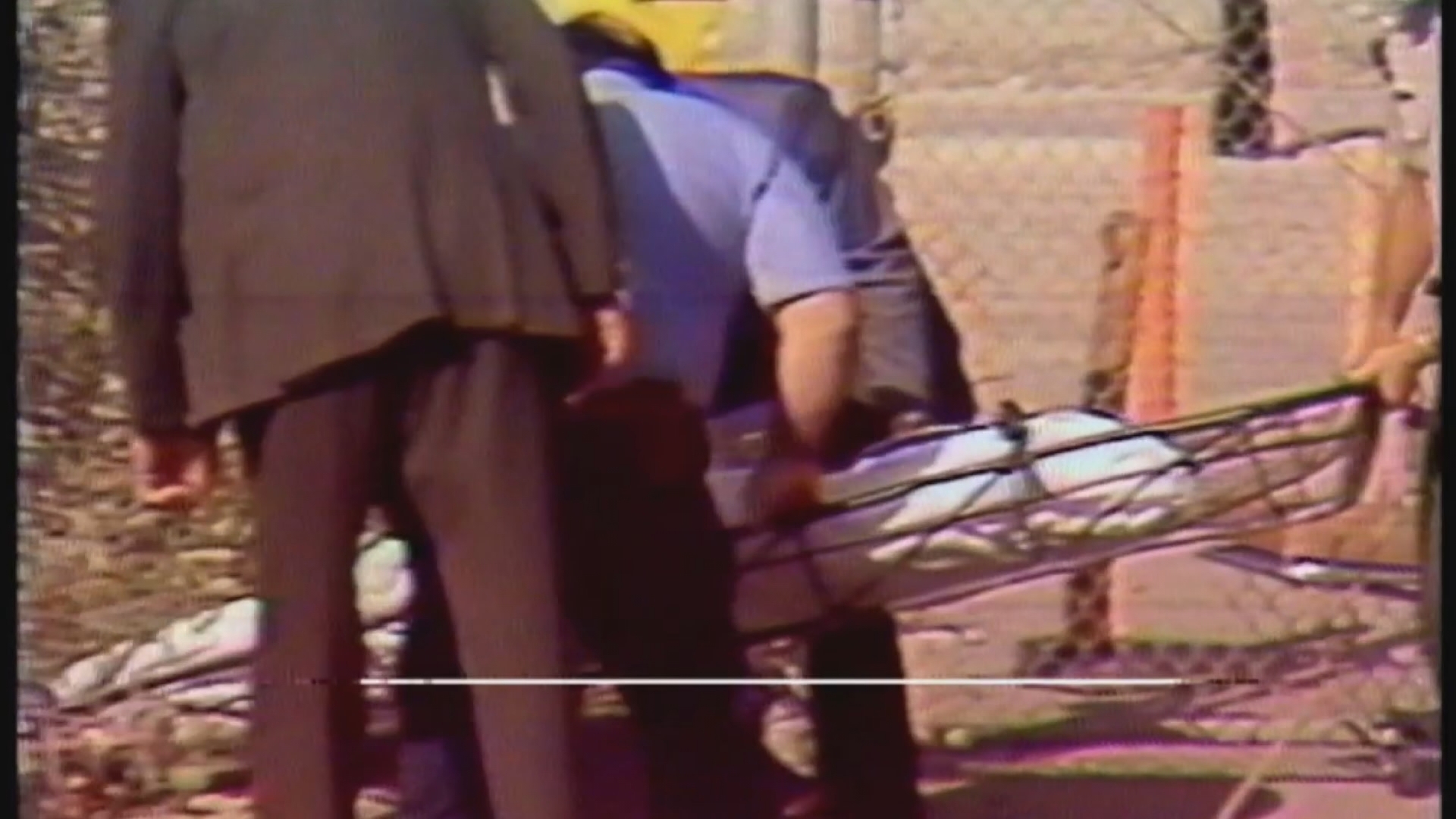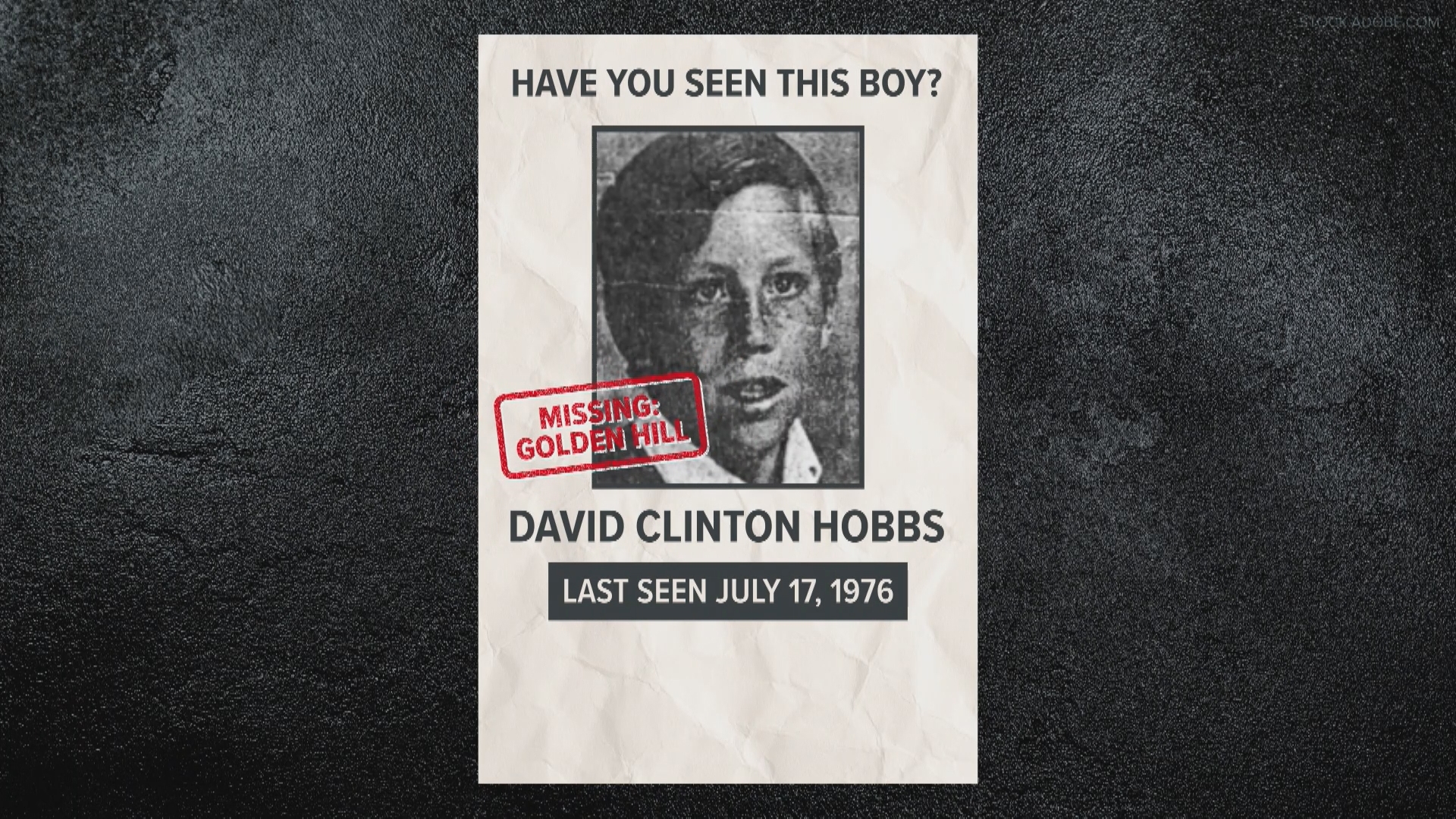SAN DIEGO COUNTY, Calif. — In the summer of 1976, three children between the ages of 9 and 14 years old, disappeared from San Diego County sidewalks, all within 20 miles of each other.
Their bodies were found days later, bludgeoned and discarded along rural roadways or tossed aside in drainage ditches.
Now, more than 48 years later, San Diego County Sheriff's Cold Case detectives are revisiting the summer of terror in hopes of finding the person or persons responsible.
"We want justice for these children," said Sheriff's Cold Case Detective Brent Spencer. "These cases have gone cold for a long period."
David Clinton Hobbs, 14
David Clinton Hobbs was reported missing from his Golden Hill home on July 17, 1976, exactly one week after celebrating his 14th birthday.
Hobbs told his mom he was heading to a Golden Hill convenience store. The 14-year-old was last seen after 10 p.m. walking near the intersection of 30th Street and Euclid.
Weeks later, on Aug. 2, Hobbs was found off of State 67 South of Poway Road. The 14-year-old had been beaten with an iron rod and stabbed 15 times.
"Our investigation shows that David was an outgoing boy who was known to walk the neighborhood where he lived and interact with older individuals," said Sheriff's Detective Brent Spencer.
Aleta Sue Grosenbach, 9
Judith Grosenbach and her 9-year-old daughter Aleta Sue were visiting San Diego from their home in Kankakee, Illinois, in August 1976.
Grosenbach grew up in San Diego and was considering moving back to San Diego so that her daughter could grow up here, too.
The family spent the summer visiting Aleta Sue's grandmother in Bird Rock. Grabbing the evening newspaper was one of the nine-year-old's daily chores.
On a Saturday afternoon in mid-August, Aleta Sue left to grab the evening paper. She walked about one and a half blocks away and didn't return.
Three days later, on Aug. 17, Grosenbach's body was found 30 years down an embankment off of Pomerado Road, thrown into the brush.
Detectives say Aleta Sue Grosenbach's murderer raped her before beating her to death.
The case remained unsolved for several years until 1982 when a woman told police her father, who had died in a motorcycle crash in 1978, had confessed to raping and murdering Aleta Sue Grosenbach.
The woman's father Louis Felton May Jr., was a registered sex offender who lived in Escondido. His daughter said Felton May Jr. confessed to her two weeks after Grosenbach's body was discovered but did not tell police about the confession for over six years.
Aleta Sue's family was not convinced.
"Something isn't right here," Judith Grosenbach told The Signal. "It's a thorn in the flesh of police that this Aleta Sue thing keeps cropping up. They want to get it out of their hair. If they decide it's the dead man, they'll drop it."
Donald Whaley, 12
Twelve-year-old Donald Whaley left his home in El Cajon on Saturday, Sept. 25, 1976, to go visit a girlfriend.
He was last seen walking near the intersection of Marshall and Magnolia in El Cajon.
After Whaley was reported missing, police received more than 200 reports from people claiming they had seen him. The alleged sightings ranged from San Clemente to Point Loma. Ultimately, none of them proved true.
The seventh-grader was found Oct. 1 face down in a brush-covered drainage ditch about 15 feet off of Murphy Canyon Road, 10 miles from his house. He was found in the clothes he was wearing when he disappeared.
The coroner's office reported he was most likely killed soon after he was abducted. He had been sexually assaulted and strangled.
"This individual, it looks like, knew where he was going to get rid of this body so that he wouldn't be found," said sheriffs
The Sheriff's Department continues to look at physical items taken from Whaley's body, using new DNA technology in hopes of a breakthrough, said sheriffs.
Are the murders connected?
The circumstances of the children's deaths were not abnormal for the 1970s.
"This is the 1970s and the mentality back then was that children would walk out and would participate in sports and walk around their neighborhoods, and oftentimes their parents didn't know where they were until it would become dark, and that's when their children were told to come home," said Sheriff's Detective Brent Spencer. "So this isn't abnormal, that these children were out during these times, and that a predator did find them and found them alone."
Although the way they were killed differs, Hobbs and Whaley shared what Detective Spencer calls, "similar victimology."
"They're both outgoing boys," said Detective Spencer. "Child predators often look and target individuals that they think are going to be easier to abduct. Back in that time frame, if children were walking around by themselves, it would be an easy target for child predators to pick up on. They still do that to this day."
Detective Spencer encourages anyone with relevant information about these killings to share their accounts with the department. Anything you might have seen or heard could help.
"These cases are specifically horrific," Detective Spencer said. "They're committed against completely innocent individuals. And we take these cold cases, very seriously. So if you have any information of a family member that may have committed this and come forward towards you or a neighbor, if you saw something where you walked past this individual and didn't know exactly what you were seeing then, but would like to talk about it now, please come forward to the San Diego sheriff's department and discuss what you've seen or heard."
WATCH RELATED: True Crime Files | The unsolved murder of 7-year-old Patty Kuzara


